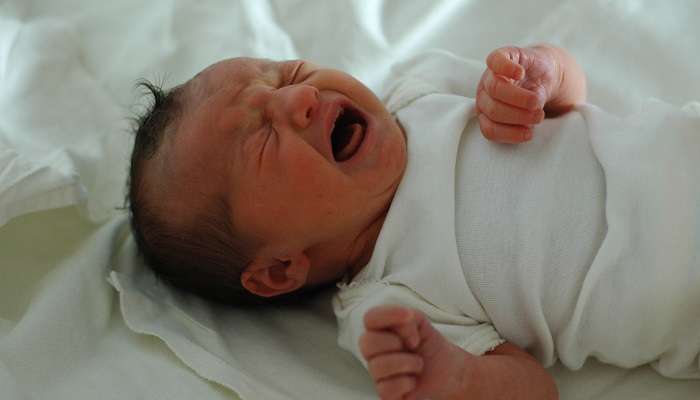There’s no special formula to put a crying baby to sleep, but a new study has found a simple approach that may work better than others.
Sitting down with a fussy infant in your arms probably won’t soothe them, according to the research. This may raise their heart rate and make them even fussier.
Researchers say that parents should pick up their fussy baby and walk around rather than soothing the child with a pacifier or other comfort item. It reduces the baby’s heart rate and helps them to fall asleep, they claim.
Nearly half of the female participants in the study succeeded in getting their babies to sleep after just 5 minutes of walking around with them.
Even crying infants are inclined to fall asleep after a 5-minute Walk/Hold, according to the researchers.
The next challenge is getting the sleeping child into bed.
If you’ve got kids, you know this is an especially infuriating step. An infant’s head can tilt back and wipe out all that hard work, particularly if they’ve just woken up.
Getting your child to sleep after you walk with them is not difficult, but good results are achieved after participants sit with their child for another 5 minutes after walking with them. Even a slight touch or closing door does not prompt them out of their cot.
Of the nine babies who were put to bed using the walk-sit method out of all 13 babies who fell asleep and stayed asleep in one of the experiments, six of them were put to bed using the walk-sit method.
According to the authors, caregivers should support the infant’s head and nestle the infant’s body close to their own to ensure security.
“A steady pace, on a flat surface, is the best option for walking for five minutes.”
If you sit for another 5 minutes, the child’s chance of waking up when being put to bed will be lower.
It’s usually true that a child’s steady stride of walking calms him down, but not all babies are the same.
Human infants and other mammalian offspring experience comfort when they are carried by their mothers and this phenomenon is referred to as the transport response.
The vestibular system, which senses motion, head position, and spatial orientation in mice, is activated by rocking motion to promote sleep.
The researchers behind the recent study believe that something similar is happening with human babies. For example, an experiment in the study found that when mothers rocked their child to sleep in a mobile cot, it had the same effect as carrying them while walking.
The present study, however, is limited and preliminary. Further research is, therefore, warranted.
Even more importantly, the experiments only focused on mothers, and there were numerous uncontrolled variables, like vocal soothing, that were not compared across trials.
However, the research found that movement is strongly linked to calming down crying children. In addition, moving with the baby did not have the same sleep-inducing effect when the baby was not crying.
This may be the result of infants being more tired when they cry, which “results in vagal reflexive activation of the transport response, leading to sleep.”
Parents might be able to harness this mammalian reflex by holding and walking with their children.
Scientists hope to provide evidence-based tips for parents who are sleep-deprived to help them calm their children down.
The research was published in Current Biology.








